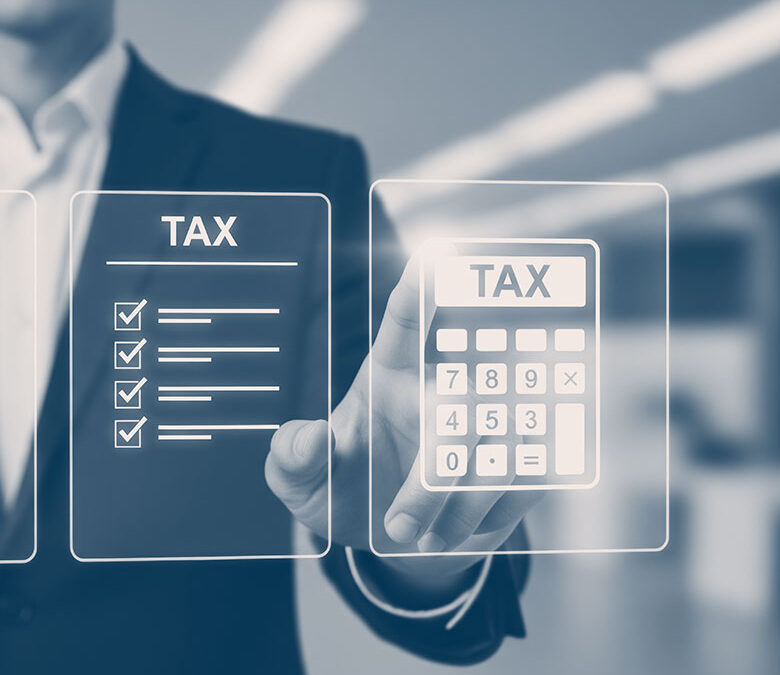

News and insights from the Verallo team
Making Tax Digital: What it means for sole traders and landlords from 2026


In recent years, digital transformation has quietly reshaped how businesses manage their finances and from April 2026, the UK’s tax system will follow suit in a major way.
Starting in April 2026, HMRC will roll out the next phase of Making Tax Digital (MTD), this time for Income Tax Self-Assessment (ITSA) impacting individuals with income from Self Employment and Property. MTD is designed to modernise the tax system, make it easier to get things right, reduce errors and improve visibility over your income. The key is to understand what’s changing, when, and how to adapt without disruption.
In this article we explore the general requirements to help you stay informed and prepare early.
Who will be affected and when?
If you’re a sole trader, landlord, or both, and your combined income from these sources exceeds a certain threshold, you’ll soon be required to keep digital records and submit tax information quarterly using approved software. The end of year tax return won’t disappear, but your ongoing responsibilities will become more regular and digitalised.
The rollout of MTD will be phased in and will be determined by income levels in the preceding tax year.
- 6th April 2026: Those earning over £50,000 gross income from self-employment and/or property in 2024/25 tax year must join.
- 6th April 2027: The threshold lowers to £30,000 gross income from self-employment and/or property in 2025/26.
- 6th April 2028: Those with income over £20,000 are expected to be included.
It’s worth noting that the threshold applies to income levels per individual, not per income stream. So if you have multiple rental properties, or multiple trades, HMRC will assess your total gross income from all these sources to determine when MTD applies from
Once you are within MTD reporting, you must continue to make quarterly submissions unless your income falls below the threshold for three tax years, or unless your income stream from sole trade/ property income has ceased.
For joint property owners – each joint owner will have record keeping and submission obligations for their share of income and expenses from the joint property.
Partnerships, trusts, and certain other groups are excluded for now, but expected to be brought into scope in the future.
General requirements under MTD for ITSA?
Once you’re within scope for MTD, you’ll need to make some key changes to how you manage and report your income. The core requirements are:
Keep digital records of income and expenses
Instead of paper-based records, you’ll need to use functional, digital software to maintain your business and/or property income data. Spreadsheets can be used provided they are in software compliant format. This means you will need to record your transactions (such as sales, rent received, costs and allowable expenses) in a way that links directly to the software used to report to HMRC.
It’s important to note:
- Your records should be kept in near real time, i.e. updated regularly, not just at year-end.
- If you have multiple streams of income (e.g. two separate businesses or properties), these will need to be tracked separately within your digital records.
- Ideally keep separate bank accounts for business and personal use to more easily identify reportable entries for MTD.
- HMRC does not allow paper records or unlinked spreadsheets unless you are digitally exempt.
Submit quarterly updates to HMRC
You’ll need to send a summary of your income and expenses every three months through MTD-compatible software. Each quarterly update will need to include:
- Your total income for the period.
- A breakdown of your business or property expenses into pre-defined categories.
- Confirmation of the period covered.
You will have 1 month and 6 days (7th of the month) following the end of the quarter to make your quarterly submission.
If your business has multiple income streams (e.g. self-employment and property income), each stream requires its own separate quarterly submission.
There are currently no changes to the way that tax liabilities are paid. The tax liability will need to be paid by 31st January following the relevant tax year.
File a year-end final declaration
A year-end tax return must be made for the relevant tax year to finalise your Income Tax position and determine your tax liability. This must be filed by 31st January following the relevant tax year.
This final submission allows you to:
- Adjust for capital allowances or private use adjustments in respect.
- Add any other relevant income not included in quarterly updates (e.g. interest, dividends, pensions).
- Claim any available tax reliefs and allowances.
- Confirm your total tax position for the year.
These submissions must be made through MTD-compatible software. This could be:
- A commercial accounting package (e.g. Xero, QuickBooks, Sage).
- Bridging software that connects spreadsheets to HMRC’s systems.
Why this matters and what it means for you
By moving to a more digital, real-time approach, MTD is expected to help:
- Reduce errors and last-minute stress at year-end.
- Improve business visibility, cashflow and aid and decision-making.
- Plan for tax bills well in advance.
However, there will be a learning curve. Whether that’s choosing the right software, understanding how to group income (especially for jointly owned properties), or adapting how you interact with your Verallo advisor. That’s why now is the ideal time to understand the implications for your unique situation and start planning early.
What if I can’t go digital?
Not everyone is expected to go digital. HMRC has confirmed that those who are digitally excluded due to age, disability, location, or religious reasons can apply for an exemption. These will be assessed on a case-by-case basis.
For those who might feel overwhelmed by MTD compliance, Verallo will offer a range of services to meet your specific need.
How Verallo can support you
Even if your MTD start date is a year or more away, it’s wise to act now. Here are our recommended first steps:
- Check your income: Is your self-employment and/or property income likely to exceed the relevant threshold? This determines your start date. Lets finalise your 2024/25 tax return as soon as possible so that we can determine when MTD will impact you and start to plan your personalised approach to MTD.
- Review your current record keeping: Are you still using paper? Are your spreadsheets in a compliant format for MTD software?
- Talk to your contact at Verallo: Understand how your current processes may need to change and how we can help. We can discuss software options and address your needs in order to become MTD compliant.
Whether you’re unsure if the rules apply to you, or unsure on how you should prepare for MTD, we’re here to help.
Contact the Verallo team today to speak with a tax adviser and get personalised support for your business.